Research on the Contrast Enhancement Algorithm for X-ray Images of BiFeO3 Material Experiment
Abstract
:1. Introduction
2. Melting and Solidification Experiment of BiFeO3 Materials
3. Image-Enhancement-Related Algorithms
3.1. Histogram Equalization
3.2. Wavelet Denoising
4. Gradient Three-Interval Equalization Image Contrast Enhancement Algorithm Combined with Improved Adaptive Contrast Enhancement
4.1. Image Preprocessing
4.2. Improved Adaptive Contrast Enhancement(IACE)
4.3. Gradient Three-Interval Equalization Algorithm Combined with Improved Adaptive Contrast Enhancement (GTIE-IACE)
5. Evaluation Metrics
5.1. Contrast Enhancement Based Contrast-Changed Image Quality Measure (CEIQ)
5.2. Measure of Enhancement (EME)
5.3. Measure of Entropy (MOE)
6. Experimental Results
7. Conclusions
Author Contributions
Funding
Institutional Review Board Statement
Informed Consent Statement
Data Availability Statement
Conflicts of Interest
References
- Zhao, J.; Du, W.; Kang, Q.; Lan, D.; Li, K.; Li, W.; Liu, Y.C.; Luo, X.; Miao, J.; Wang, Q.; et al. Recent Progress of Microgravity Science Research in China. Chin. J. Space Sci. 2022, 42, 772–785. [Google Scholar] [CrossRef]
- Ngomesse, F.; Reinhart, G.; Nguyen-Thi, H.; Soltani, H.; Zimmermann, G.; Browne, D.J.; Sillekens, W. In situ investigation of the Columnar-to-Equiaxed Transition during directional solidification of Al–20 wt.%Cu alloys on Earth and in microgravity. Acta Mater. 2021, 221, 117401. [Google Scholar] [CrossRef]
- Soltani, H.; Reinhart, G.; Benoudia, M.C.; Ngomesse, F.; Zahzouh, M.; Nguyen-Thi, H. Equiaxed grain structure formation during directional solidification of a refined Al-20wt.%Cu alloy: In situ analysis of temperature gradient effects. J. Cryst. Growth 2022, 587, 126645. [Google Scholar] [CrossRef]
- Wang, J.; Wang, K.J.; Wu, J.L.; Hu, J.; Mou, J.F.; Li, L.; Feng, Y.J.; Deng, Z.S. Preparation of eGaIn NDs/TPU Composites for X-ray Radiation Shielding Based on Electrostatic Spinning Technology. Materials 2024, 17, 272. [Google Scholar] [CrossRef] [PubMed]
- Wang, L.; Hoyt, J.J. Layering misalignment and negative temperature dependence of interfacial free energy of B2-liquid interfaces in a glass forming system. Acta Mater. 2021, 219, 117259. [Google Scholar] [CrossRef]
- Jian, Z.; Xu, T.; Xu, J.B.; Zhu, M.; Chang, F. Development of Solid-Liquid Interfacial Energy of Melt-Crystal. Jinshu Xuebao Acta Metall. Sin. 2018, 54, 766–772. [Google Scholar]
- Tang, J.R.; Mat Isa, N.A. Bi-histogram equalization using modified histogram bins. Appl. Soft Comput. 2017, 55, 31–43. [Google Scholar] [CrossRef]
- Deng, W.; Liu, L.; Chen, H.; Bai, X. Infrared image contrast enhancement using adaptive histogram correction framework. Opt. Z. Licht Elektron. J. Light Electronoptic 2022, 271, 170114. [Google Scholar] [CrossRef]
- Alhajlah, M. Underwater Image Enhancement Using Customized CLAHE and Adaptive Color Correction. Comput. Mater. Contin. 2023, 74, 5157–5172. [Google Scholar] [CrossRef]
- Ye, B.W.; Jin, S.; Li, B.; Yan, S.Y.; Zhang, D. Dual Histogram Equalization Algorithm Based on Adaptive Image Correction. Appl. Sci. 2023, 13, 10649. [Google Scholar] [CrossRef]
- Cui, X.; Lu, D.; Ma, D.; Kang, C.; Sun, J. Research Progress of High Temperature Material Science Experimental Equipment for Space Application. Manned Spacefl. 2023, 43, 455–463. [Google Scholar]
- Zhao, J.; Wang, S.; Liu, Q.; He, Z.; Zhang, W.; Li, K.; Zhou, Z.; Luo, X.; Miao, J.; Zheng, H.; et al. Retrospect and Perspective on Microgravity Science in China. Chin. J. Space Sci. 2021, 41, 34. [Google Scholar] [CrossRef]
- Gong, Y.; Yu, Z.; Wang, J. Application of X-ray 3D lmaging in the Field of Battery Materials Research. Chemistry 2020, 83, 64–70. [Google Scholar]
- Liu, X.K.; Yu, Q.; Pan, X.H.; Yu, Z.H.; Lu, X.X. Image contrast enhancement algorithm for X-ray observation of space materials in situ. J. Instrum. 2022, 17, P06010. [Google Scholar] [CrossRef]
- Liu, X.; Pan, X.; Yu, Z.; Ren, J.; Zhuang, Y.; Yu, Q. A solid–liquid interface enhancement algorithm for X-ray in situ observation of space materials. Mater. Des. 2023, 228, 111852. [Google Scholar] [CrossRef]
- Liu, Y.; Wang, Y.; Ma, J.; Li, S.; Pan, H.; Nan, C.-W.; Lin, Y.-H. Controllable electrical, magnetoelectric and optical properties of BiFeO3 via domain engineering. Prog. Mater. Sci. 2022, 127, 100943. [Google Scholar] [CrossRef]
- Chen, K.; Pan, X.; Deng, W.; Ai, F.; Tang, M.; Zhang, M.; Wen, H.; Gai, L. X-ray Fluoroscopy In Situ Real Time Viewing Device. CN210347498U, 17 April 2019. [Google Scholar]
- Kaur, M.; Kaur, J.; Kaur, J. Survey of Contrast Enhancement Techniques based on Histogram Equalization. Int. J. Adv. Comput. Sci. Appl. IJACSA 2011, 2, 137–141. [Google Scholar] [CrossRef]
- Narendra, P.M.; Fitch, R.C. Real-Time Adaptive Contrast Enhancement. IEEE Trans. Pattern Anal. Mach. Intell. 1981, PAMI-3, 655–661. [Google Scholar] [CrossRef]
- Pu, M.; Huang, Y.; Liu, Y.; Guan, Q.; Ling, H. EDTER: Edge Detection with Transformer. In Proceedings of the 2022 IEEE/CVF Conference on Computer Vision and Pattern Recognition (CVPR), New Orleans, LA, USA, 18–24 June 2022. [Google Scholar]
- Zuiderveld, K.J. Contrast Limited Adaptive Histogram Equalization. In Graphics Gems; Academic Press: Cambridge, MA, USA, 1994; pp. 474–485. [Google Scholar]
- Yan, J.; Li, J.; Fu, X. No-reference quality assessment of contrast-distorted images using contrast enhancement. arXiv 2019, arXiv:1904.08879. [Google Scholar]
- Panetta, K.; Grigoryan, A. A New Measure of Image Enhancement. In Proceedings of the InIASTED International Conference on Signal Processing & Communication, Malaga, Spain, 19–22 September 2000. [Google Scholar]
- Tian, F.; Wang, M.; Liu, X. Low-Light Mine Image Enhancement Algorithm Based on Improved Retinex. Appl. Sci. 2024, 14, 2213. [Google Scholar] [CrossRef]
- Jiang, Y.; Gong, X.; Liu, D.; Cheng, Y.; Fang, C.; Shen, X.; Yang, J.; Zhou, P.; Wang, Z. EnlightenGAN: Deep Light Enhancement without Paired Supervision. IEEE Trans. Image Process. 2019, 30, 2340–2349. [Google Scholar] [CrossRef] [PubMed]

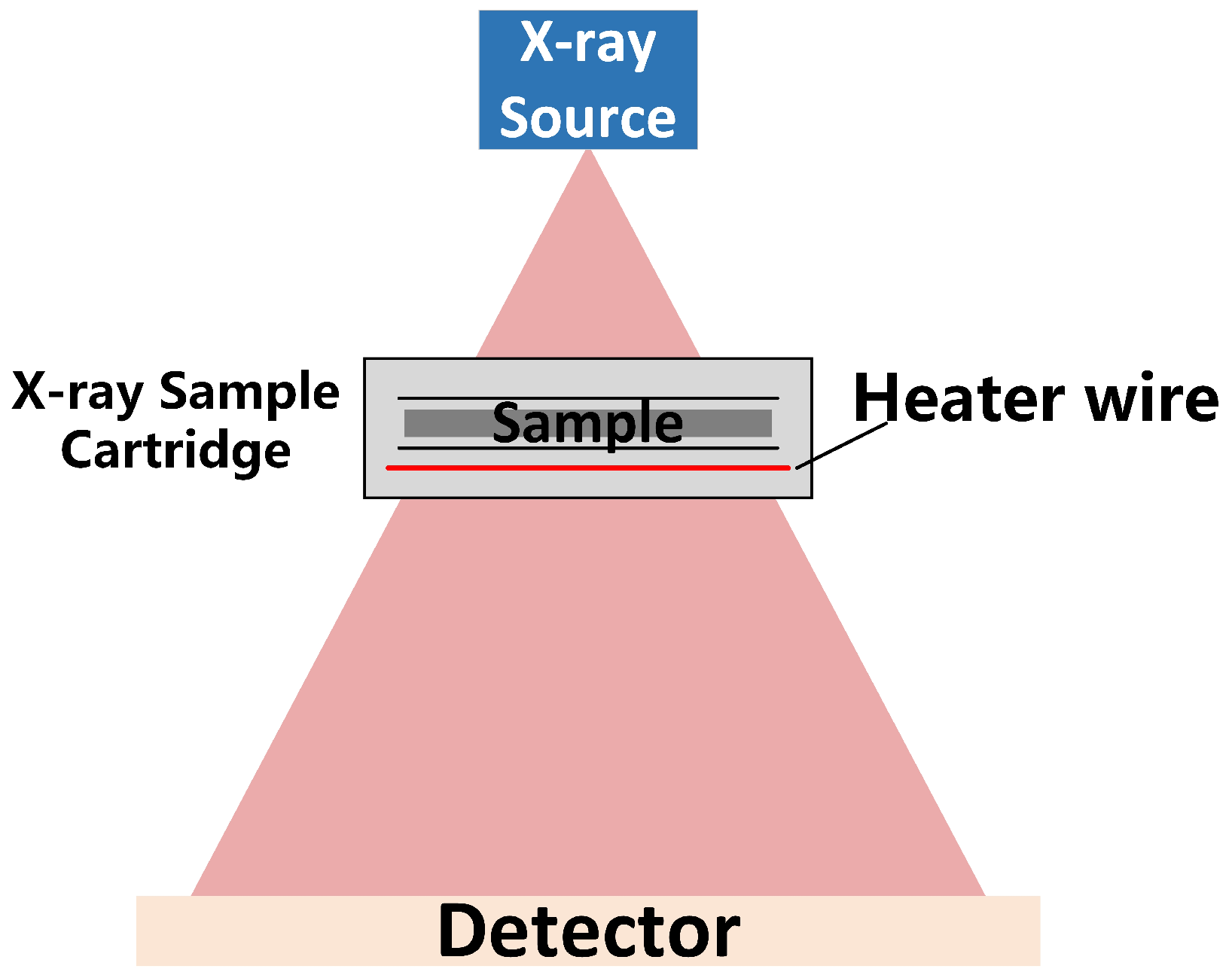
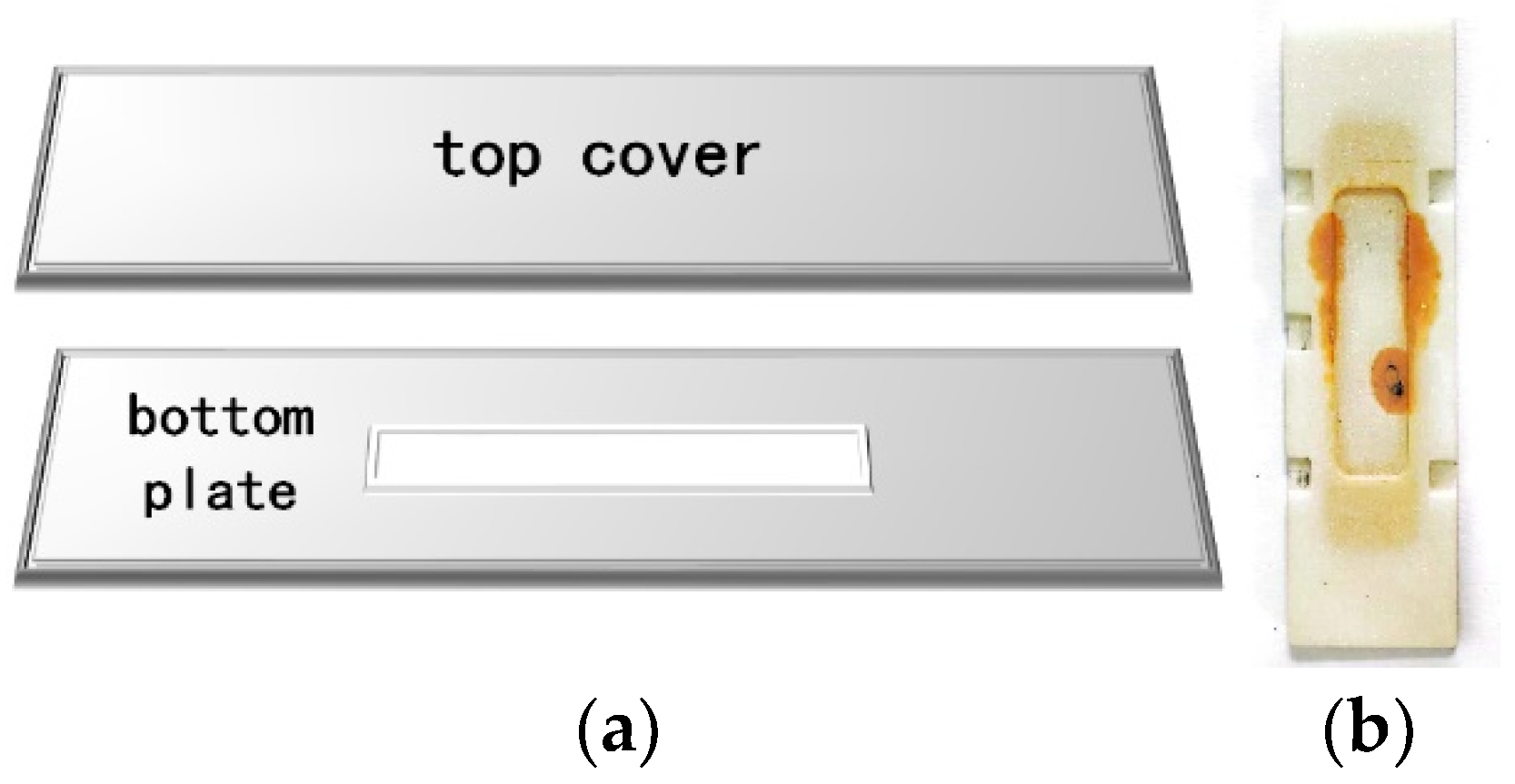






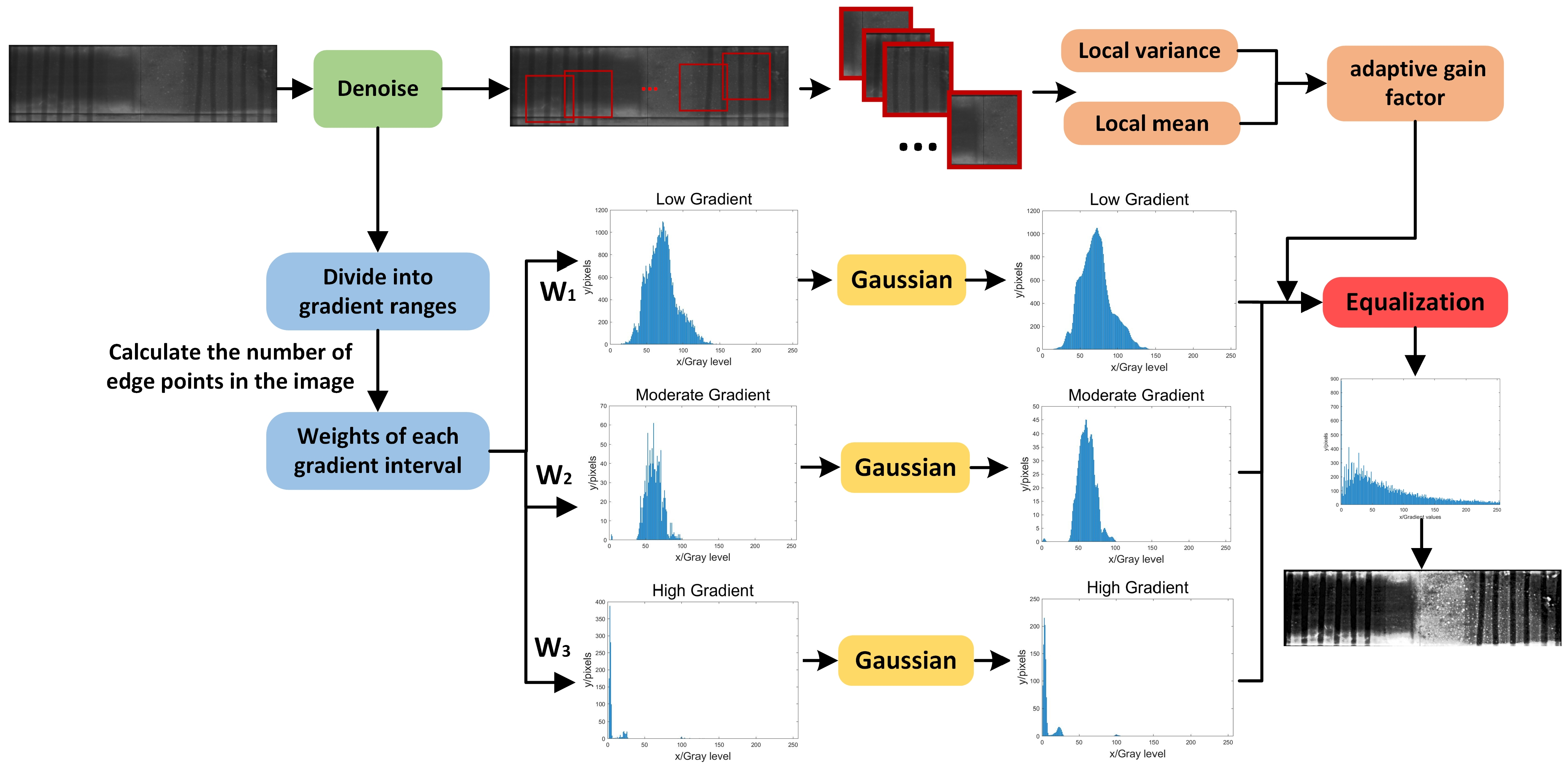



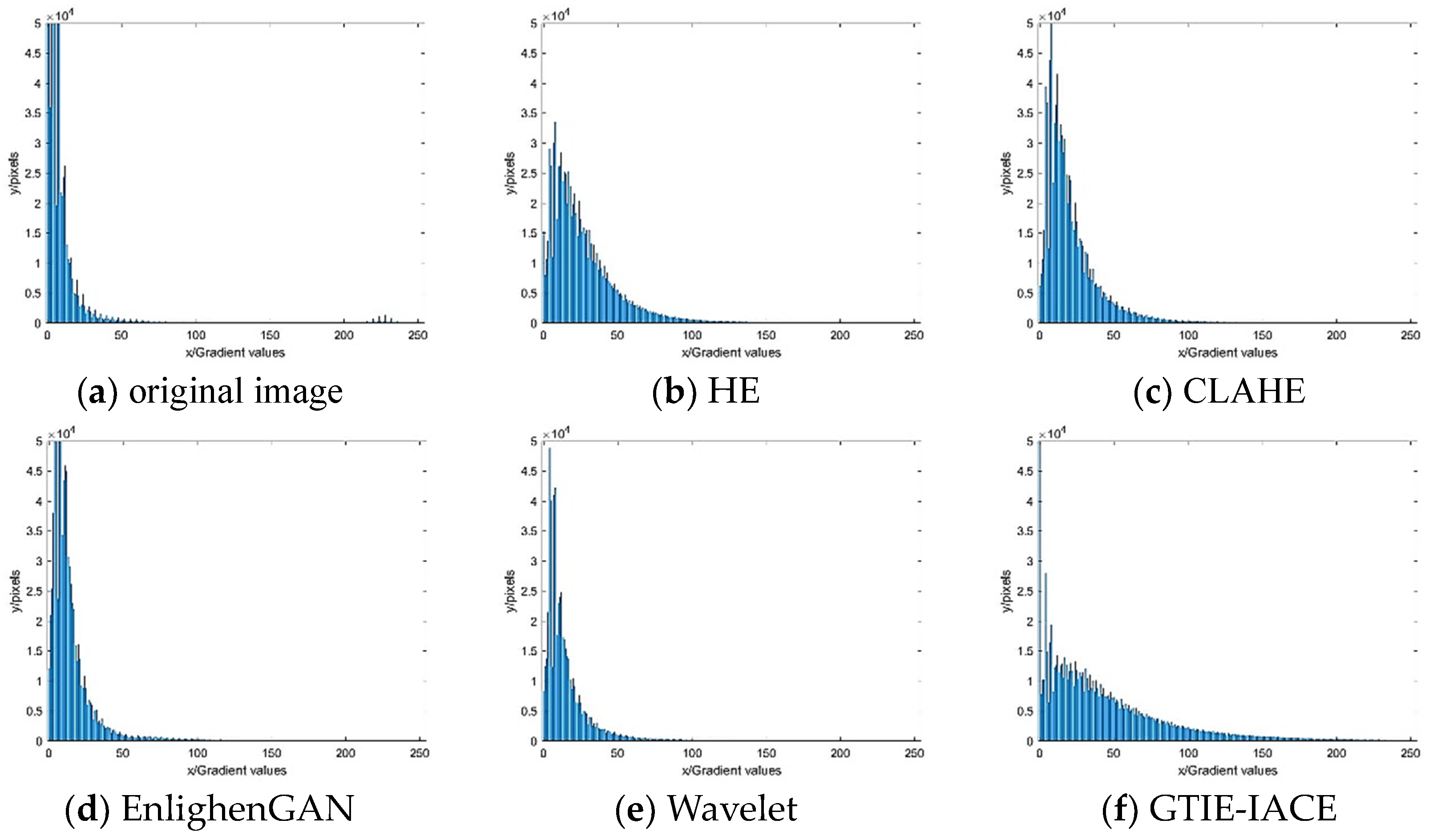
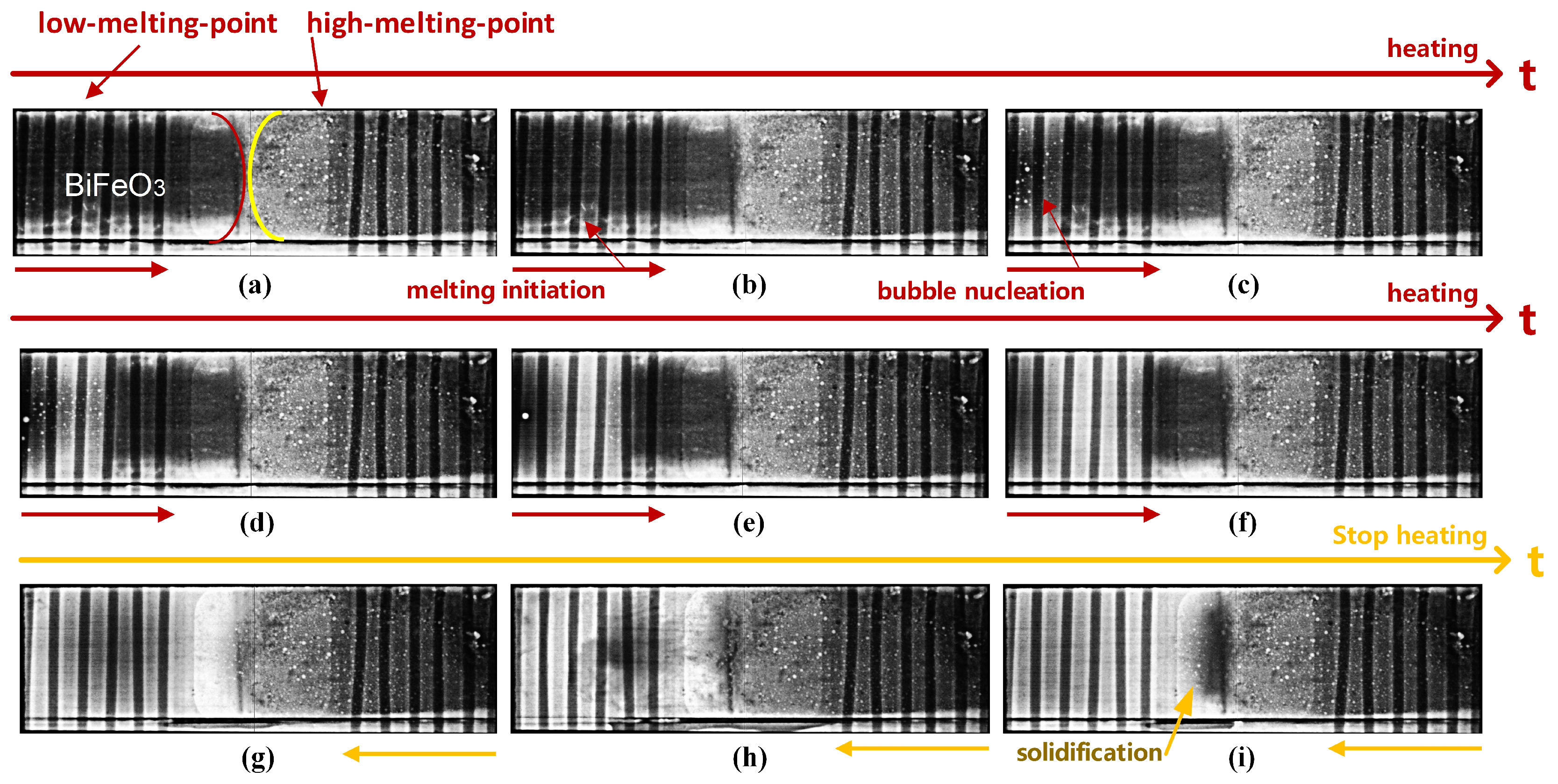
| Method | Evaluation Scores | ||
|---|---|---|---|
| CEIQ | EME | MOE | |
| Original image (a) | 2.289 | 3.765 | 6.065 |
| HE (b) | 4.493 | 12.037 | 7.801 |
| CLAHE (c) | 4.975 | 6.181 | 7.139 |
| EngligntenGAN (d) | 4.201 | 14.2223 | 7.009 |
| Wavelet (e) | 3.303 | 1.8334 | 6.412 |
| GTIE-IACE (f) | 6.512 | 41.0593 | 7.804 |
Disclaimer/Publisher’s Note: The statements, opinions and data contained in all publications are solely those of the individual author(s) and contributor(s) and not of MDPI and/or the editor(s). MDPI and/or the editor(s) disclaim responsibility for any injury to people or property resulting from any ideas, methods, instructions or products referred to in the content. |
© 2024 by the authors. Licensee MDPI, Basel, Switzerland. This article is an open access article distributed under the terms and conditions of the Creative Commons Attribution (CC BY) license (https://creativecommons.org/licenses/by/4.0/).
Share and Cite
Li, X.; Yu, Q.; Pan, X.; Yu, Z. Research on the Contrast Enhancement Algorithm for X-ray Images of BiFeO3 Material Experiment. Appl. Sci. 2024, 14, 3546. https://doi.org/10.3390/app14093546
Li X, Yu Q, Pan X, Yu Z. Research on the Contrast Enhancement Algorithm for X-ray Images of BiFeO3 Material Experiment. Applied Sciences. 2024; 14(9):3546. https://doi.org/10.3390/app14093546
Chicago/Turabian StyleLi, Xinze, Qiang Yu, Xiuhong Pan, and Zehua Yu. 2024. "Research on the Contrast Enhancement Algorithm for X-ray Images of BiFeO3 Material Experiment" Applied Sciences 14, no. 9: 3546. https://doi.org/10.3390/app14093546




